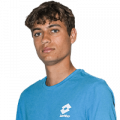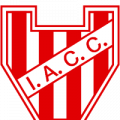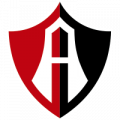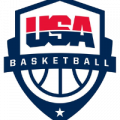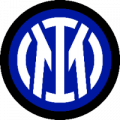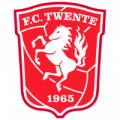After any season that doesn't conclude with a win in a team's final game, there's a certain amount of soul-searching that goes on. What more can be done? What did the team do right? What did it do wrong? What was missing? What worked? All sorts of questions can be asked, and now's the time to start asking them.
I'm not going to attempt to answer every single "What about (x)" question here; that would take forever and this thing is already gonna be long. But I will try to hit on some themes I saw over the course of the season and see if there are ways the team can use those themes to improve this winter.
A MILE WIDE AND AN INCH DEEP
One of Caleb Porter's stated goals in the 2016 offseason was to increase the Portland Timbers' depth. He did that quite well, at least volume-wise, adding, among others, Lawrence Olum, Chance Myers, Roy Miller, Dairon Asprilla, Rennico Clarke, Jeff Attinella, and a couple T2 signees.
If you've been paying attention at all this season, you'll note a significant problem with that list of names. That problem? Most of them logged pretty significant minutes as starters, due to the injury cavalcade that started before the season even began.
At the end of 2016, the defensive corps was Gbenga Arokoyo, Nat Borchers, Taylor Peay, Alvas Powell, Liam Ridgewell, Jermaine Taylor, Steven Taylor, Vytas, and Zarek Valentin. By mid-February 2017, Borchers, who was injured, had officially retired, Peay had moved to Real Monarchs, and both Taylors were gone (Jermaine to Minnesota United and Steven to Ipswich Town).
Those departures left Arokoyo, Powell, Ridgewell, Vytas, and Valentin as the Timbers' only realistic starting defender options a month before the season started. Roy Miller was acquired in early January of 2017, but he was envisioned as a complementary depth piece, not a starter. A week into preseason training, Arokoyo, the Timbers' planned starting CB partner for Ridgewell, ruptured his Achilles tendon, and just like that was done for the year.
The Arokoyo injury put the team into panic mode, throwing their 2017 plans into some serious disarray. Coach Caleb Porter's desire to add depth at the end of 2016 became a frantic search for starting quality talent in 2017, which isn't easy most times but is particularly tricky three weeks before the season starts.
They managed to get Lawrence Olum from Sporting Kansas City in early February, bringing their first team defender count to six. That's not optimal, but it was at least enough to stave off disaster, as long as all six stayed reasonably healthy.
SPOILER ALERT: All six didn't stay reasonably healthy.
If the injury to Arokoyo meant that Porter's preferred starting defense was Vytas/Olum/Ridgewell/Powell, that combination played exactly four games for the Timbers in 2017, all before the second week of May.
After that game, a 5-1 win against Minnesota United, Ridgewell and Vytas would sit the very next game, with foot and calf injuries respectively, and that backline wouldn't return again until April 22 in Vancouver. After that, two more games, then that group never played in the same back four again in 2017.
By my count, the Timbers used 19 different back fours in 34 league games this season. I am no soccer expert, but that seems not great. Ridgewell only played 15 league games this year thanks to injury, and the rest of the back line had a similar story. Larrys Mabiala arrived in June and played his first game in early July, and was one of the only regulars in the back for the rest of the summer.

By the time fall rolled around, a back line of Miller/Ridgewell/Mabiala/Valentin had sort of established itself as the regulars, with Alvas Powell and Vytas also seeing some minutes. But by the end of the season, the damage was done; the Timbers had an awful summer, only winning twice in ten games from mid-June to mid-August.
All of which is a really long way of saying that Portland's bench depth was called into action as regular starters a lot more than the team probably anticipated or wanted, and in a lot of cases, that depth was found wanting. Depth, by definition, is never going to be as good as your starting XI, and that's fine - the problem is the dropoff in talent level from Portland's starters to its bench was a bigger drop than could be sustained for more than a game or two.
In MLS, with its more-brutal-than-most travel problems (if a pro athlete flying coach on a scheduled flight is a "problem"), a team would ideally have 13 or 14 MLS starting-quality players, because wear and tear is gonna happen. The Timbers, at any given time this year, arguably had seven or eight. Injuries are absolutely not an excuse for why the Timbers didn't do better or win more, but they are a factor.
In that second playoff game against Houston, for instance, the Timbers started Amobi Okugo at defensive midfielder. Okugo, for those keeping score at home, is the fifth-choice player at that position. Again, injuries are not an excuse, but it's hard to build the cohesion and understanding that a team needs to be consistent when the players playing for that team aren't consistent. And that was just the defense!
WELL, SO WHAT?
It's at this point where it seems like offering solutions would be the expectation, no? Well, as I mentioned, I'm no expert. But if it were me, here's what I'd do to improve the Timbers.
Find a new goalkeeping coach: The Timbers had a bit of a goalkeeping seesaw this season; Jake Gleeson was the #1 for the first half of the season, then he got hurt, and in much the same way Gleeson stepped up in 2016 and took the starter job from an injured Adam Kwarasey with some great performances, Jeff Attinella did the same thing to Gleeson this season. Which isn't necessarily a bad thing, right? Better keeper steps up, takes job, life goes on. Problem is, these two are basically the same keeper, so there's not a lot of difference between the two.
I'd give Attinella the edge as far as being better at quickly starting play - he never hesitates to quickly throw a ball to a moving defender to try to start a break, where Gleeson's more prone to put the ball down and survey the landscape a bit, which tends to slow the game a bit. And I'd give Gleeson the edge as far as shot stopping goes - he has quicker reflexes and gets to balls better than Attinella does.
They also share another thing, though - a propensity to make the same kinds of mistakes. They're sometimes slow to get off their line, they don't have the best footwork, and they're caught out of position more than you'd like to see. If they're both making those mistakes, that tells me that coaching is an issue. Adin Brown is the current GK coach, but that would seem to be a pretty easy place for the Timbers to upgrade and maybe get more out of two pretty good keepers.
Get three more defenders: This is where it gets to the "easier said than done" portion of the program. As mentioned above, a successful MLS team should have probably 13-14 starting quality guys before the talent level drops to that of a replacement-level player; the struggles of the defense to stay healthy, combined with the pretty solid quality of the attack, leads me to think the Timbers should focus their attention on adding those two or three pieces at the back.
The injury Diego Chará suffered in Houston leads me to believe one of those defensive pieces should be his eventual replacement. Lawrence Olum deputized well at DM this season, but he's 33. David Guzmán is the most realistic option now, and he's four years younger than Chará, but he's still 27. If we assume that Chará comes back 100% healthy from his broken foot with no setbacks next season, he's probably only got two or so seasons left at his Chará-tastic best. So by that time, with no heir apparent, Guzmán's 29, and all of a sudden the Timbers are in a defensive midfielder mess.
I would also think the Timbers are going to need to replace Ridgewell sooner than later - unless they can rework his deal, that's a priority this winter. He's a good organizer and captain, but his complete inability to stay healthy, particularly at his price point, turn those into luxury skills.
What about the third defender the Timbers should get? This would ideally be an outside back to push Alvas Powell for a starting job. Powell's good but inconsistent, and with someone waiting to take his spot he might iron out some of those inconsistencies.
Evaluate the sports performance staff: I really hesitate to even mention things like this, because as an outsider with no medical training whatsoever except the limited skills of Dr. Google, I am really, really unqualified to speak with any certainty about how the Timbers' medical, fitness, and training staffs either work or don't work.
I wouldn't even begin to try to prescribe (get it? DOCTOR JOKE!) things to fix what's going on because I have literally no idea what's currently going on, how it differs from any established norm or practice of other teams, or anything even remotely useful in that regard.
But from my outside perspective, it seems that something's not working right. Injuries happen for a whole bunch of reasons, and recoveries, of course, aren't linear, but I would think any team with the injury and recovery record of the Timbers in 2017 would want to take a very serious look at the medical/fitness side of their operation, at what the best teams in the sport (not just MLS, but worldwide) do, and, uh, do those things.
I KNOW! It's not satisfying to say "evaluate the staff" and not have specific ideas. But again: it is me, not a doctor. Not a trainer. Not involved with the team. So all I can do is say "I hope they're looking at this" and leave it at that.
And honestly, I think that's most of what the Timbers need to focus on this winter - a midfield of Nagbe, Valeri, Blanco, Guzmán, Chará etc is really solid, and they have good depth there. An attacking trio of Fanendo Adi, Jeremy Ebobisse, and Darren Mattocks means the strike force is pretty solid, assuming Adi stays.
With an urgent need to upgrade things at the back, in both starter and bench roles, the strike force can stay as it is until the summer window; this winter needs to be about rebuilding the foundation before the house gets expanded on top of it.












